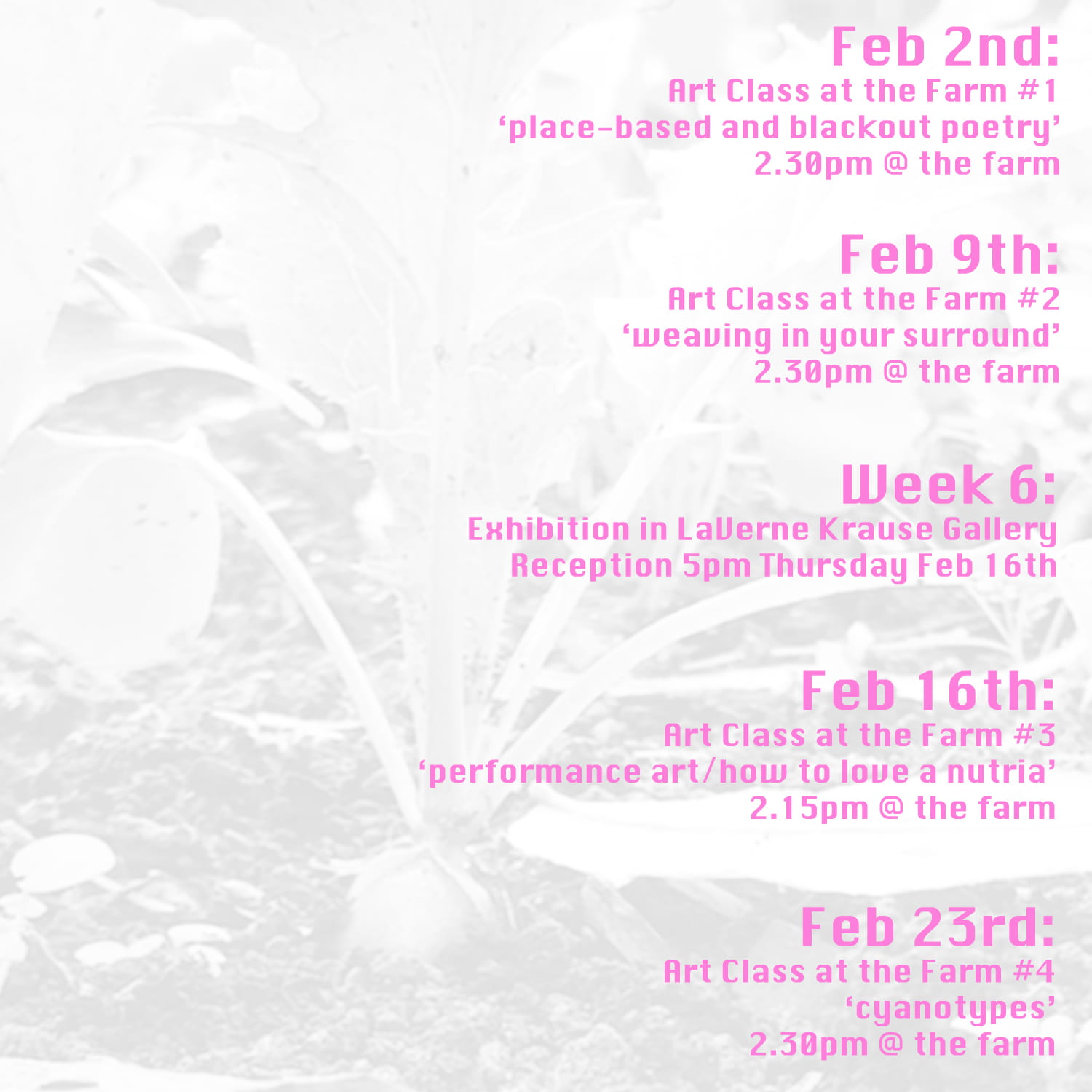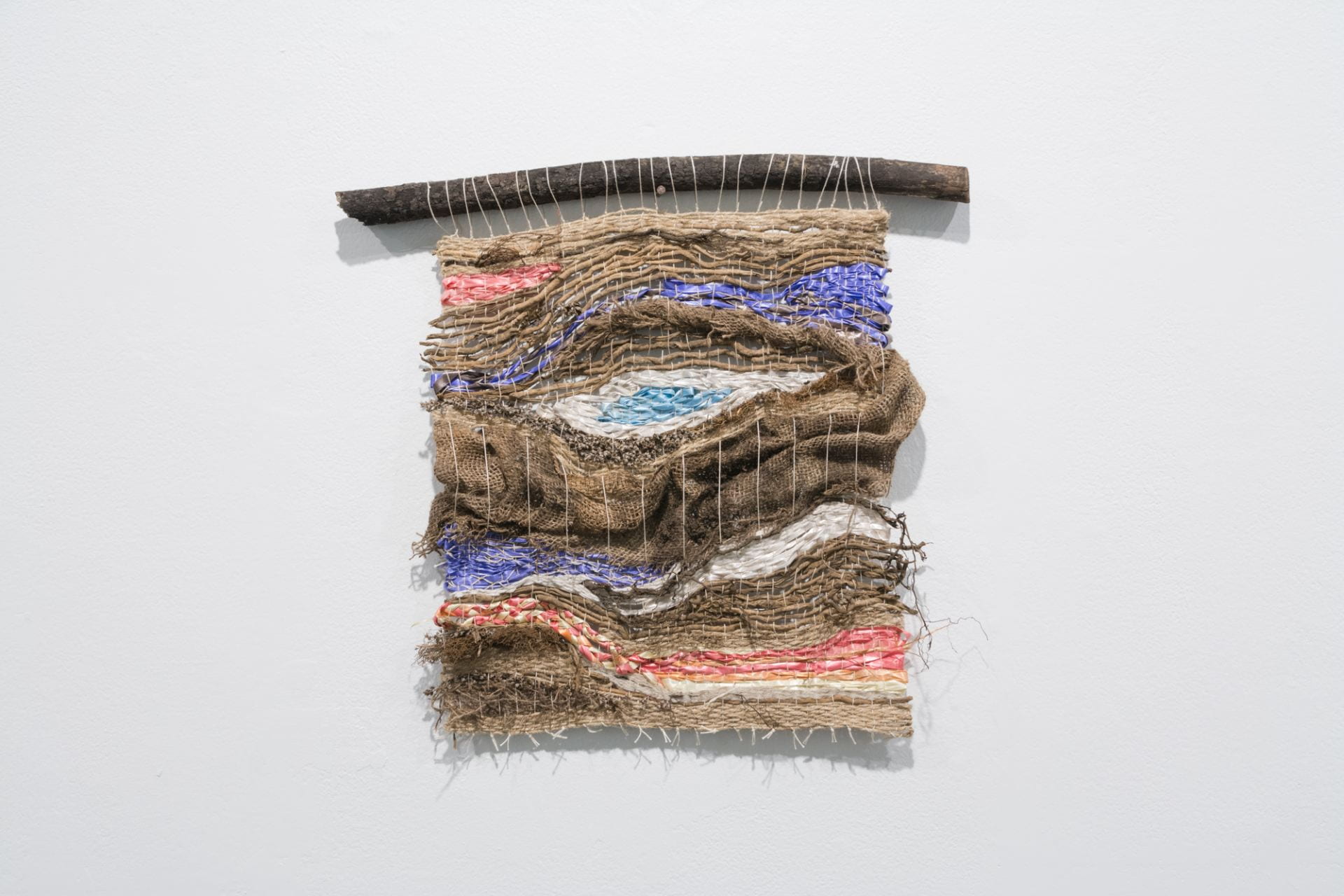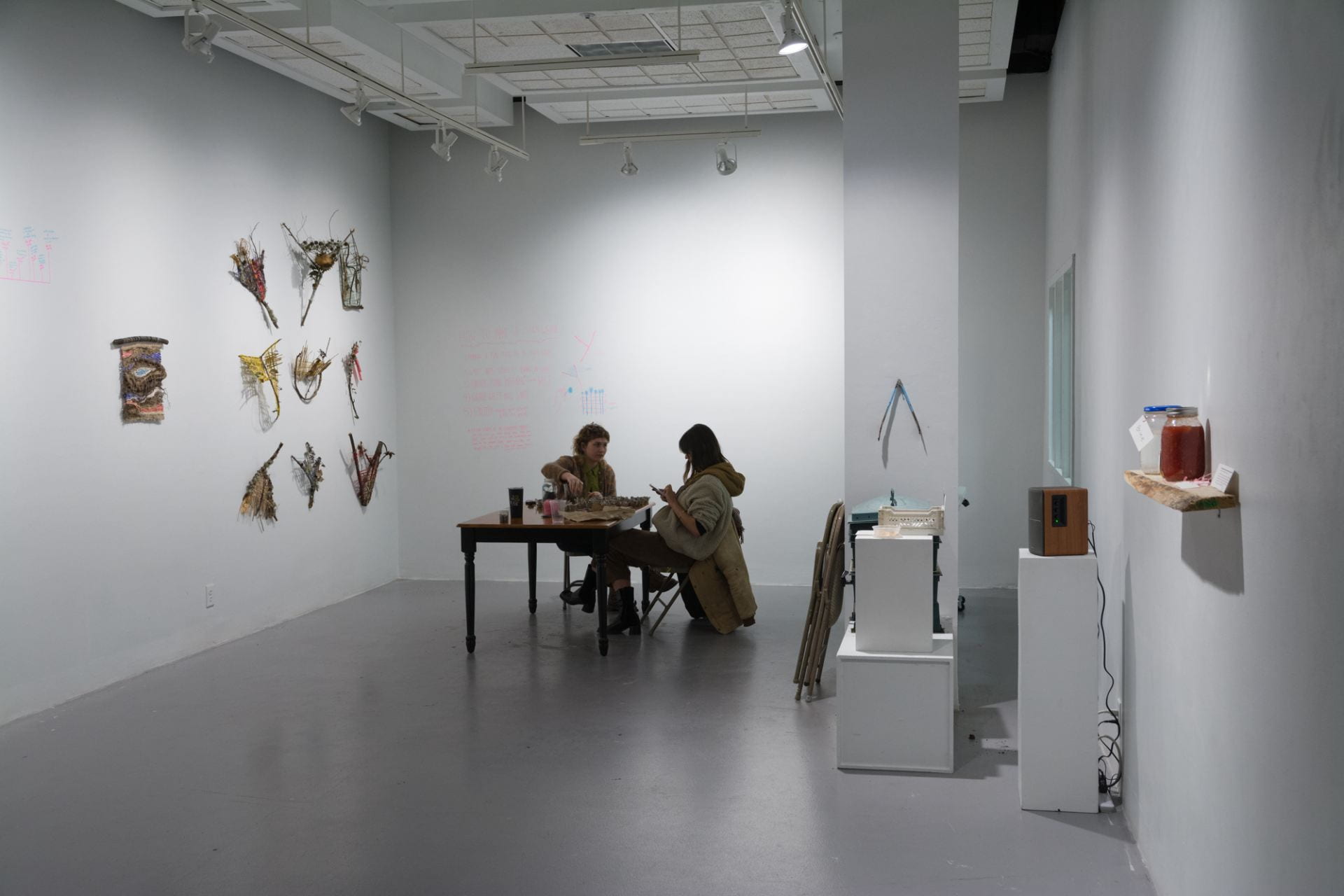Yield #1-The Urban Farm
Temporally, it began with dinner: a group of friends and friends-to-be who think and work between art practice, art history, and environmental studies gathered to eat beetroot tortellini and talk about their dreams. Dreams borne of shared interest in collaborative practice, and shared desire to make art in this place. From the start, we were fueled by such questions as: ‘how do you undertake socially responsible creative practices as an art form?’, ‘how does food move through Eugene?’, and ‘how could we support these movements with care?’
The Urban Farm–in operation on Kalapuya Ilihi since 1976–soon became the heart of our thinking and creative togetherness. Its relocation had timely resonance with our lines of inquiry into food sovereignty, environmental education, public space, and the many (often conflicting) definitions of ‘collaboration.’ The Farm also became a potent home for our consideration of the aesthetic and what it can do for research and resistance.
By bringing the Urban Farm into Lawrence Hall, we are troubling its edges, extending its sensory parameters, and asking: can you relocate a place with deep roots? At the same time, our exhibition, events, and forthcoming publication (documenting our collaborative process) celebrate the joyous multitude of ways in which urban gardens nourish–here, now, and beyond.
Yield #1-The Urban Farm
Exhibition: February 13-16, 2023
Reception: February 16, 2023 at 5:00 p.m.
LaVerne Krause Gallery
hivemind (a shape-shifting group of friends and collaborators including Christian Alvarado, Adam DeSorbo, Anastasiya Gutnik, Megan Hayes, Taylor Paone, David Peña, Rae Root, Joe Sussi and many more)
Related Events: Art Classes at the Urban Farm each Thursday in February
February 2: Art Class at the Farm #1
Place-based and blackout poetry // 2:30 p.m.
February 9: Art Class at the Farm #2
Weaving in your surround // 2:30 p.m.
February 16: Art Class at the Farm #3
Performance art / How to love a nutria // 2:15 p.m.
February 23: Art Class at the Farm #4
Cyanotypes // 2:30 p.m.
Christian Alvarado
Christian (he/they) is an afro-latinx artist and educator from New Jersey who works in mixed-media sculpture and drawing. Their work currently investigates themes of experience, play, labor, and fantasy through performance sculptures, aluminum foil impressions and illustration. Christian’s work has been featured in the Laverne Krause Gallery in Eugene, Oregon, the digital Shoebox Gallery, Foundations Gallery in Tulsa Oklahoma, and the Tyler School of Art in Philadelphia. As an educator, they have taught through various programs such as the Bushwick Starr in New York, and Vibe for Portland in Oregon. They are currently obtaining their Masters of Fine Arts degree at the University of Oregon, where they also teach core art classes.

Adam DeSorbo
Adam is an artist using photography, projection, sculpture, and sound to create emotive spaces of reflection in a time of ecological despair. To achieve an internal migration through the darkness of this ecological despair, he explores and questions how ecology and spirituality can be translated through installations to create paths forward. He is also interested in employing alternative ways of creation and materiality, with some current processes including the creation of concrete out of coal ash and making music through biodata sonification. Adam holds a B.S. in Environmental Studies from SUNY College of Environmental Science and Forestry and is an MFA candidate at the University of Oregon.
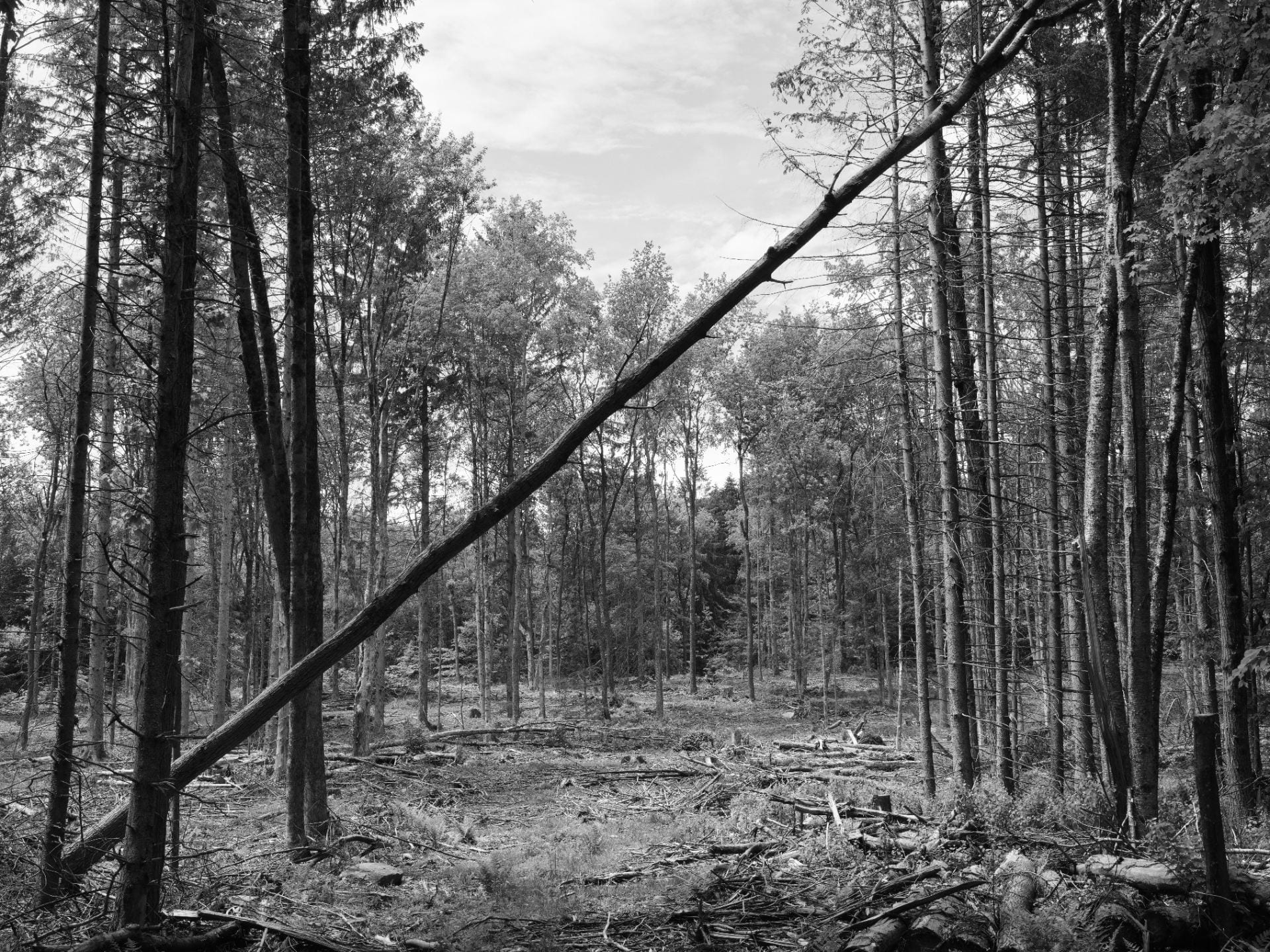
Anastasiya Gutnik
Anastasiya is an artist whose work incorporates walking, storytelling, and notions around place and transience. Primal materials such as soil, salt, ash, bones, grasses, ferns, become starting points for her art installations for their physical properties, cultural meaning, and ecological significance. The human and non-human find connections through their own gestural expressions, gravitational pulls, and historic entanglements. She has been exploring ways that our relationship to our natural world (and each other) is developed and passed down generationally through video, installation, sculpture, and drawing in projects that span multiple timescales from fast improvisational drawing to durational performances to sites recorded over years. Prior to her MFA candidacy at the University of Oregon, Anastasiya received her BFA in painting at the Maryland Institute College of Art.

Megan Hayes
Megan is an artist, researcher, and PhD candidate in Environmental Studies. She is currently researching oysters, their relationships to the moon, tides, and humans, and the ways in which these slippery creatures help shape concepts of love and attachment. Megan likes playing with art as a medium for togetherness in the midst of incommensurability. She arrives at the University of Oregon with a Bachelor’s degree in Photography and Situated Media from the University of Technology, Sydney, and a Research Master’s in Cultural Analysis from the University of Amsterdam.

Taylor Paone
Taylor is an artist and MA candidate in Global Studies and Food Studies. She is fascinated by impermanence and interspecies commingling. Through her place-based multimedia weaves, she explores the physical and emotional dimensions of [micro]communities. While at the University of Oregon, she is researching the connection fostered between small scale beekeepers and honey bees in the Willamette Valley in the context of the industrial food system. Stories shared by beekeepers reveal how landscapes can hold intentional multispecies collaboration within systems that capitalize on commodification.
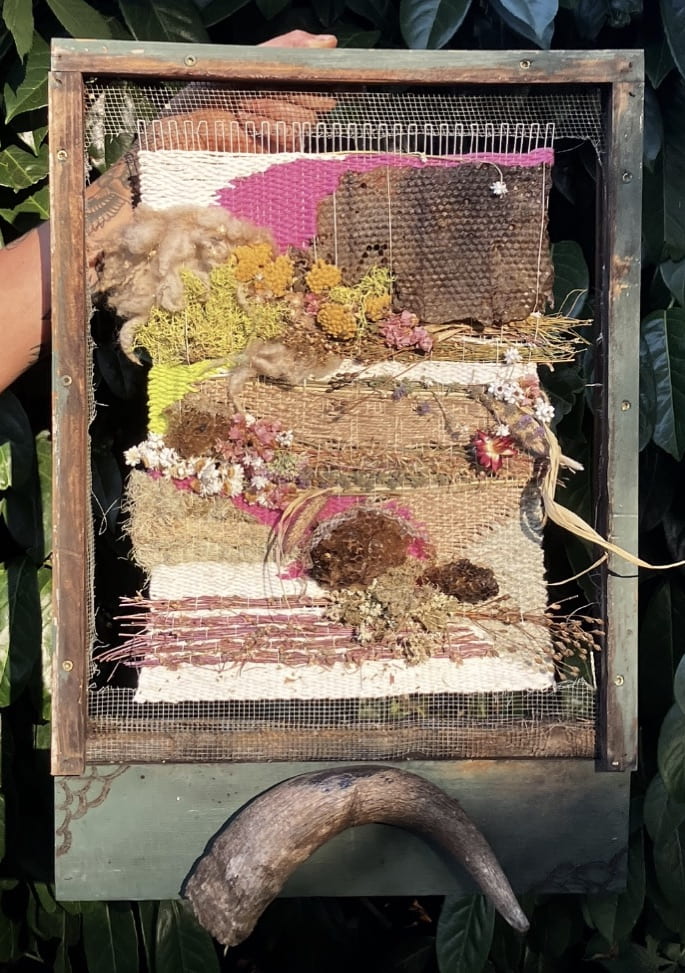
David Peña
David is a multidisciplinary artist and cultural organizer from the border region between Tijuana and San Diego. He uses the vocabulary of patterns as a way to contemplate personal and public occurrences and as a point of collaboration. He seeks to connect his visual practice with his commitment to people and place, exploring ways to bridge community and understand organizing as an art practice in itself.
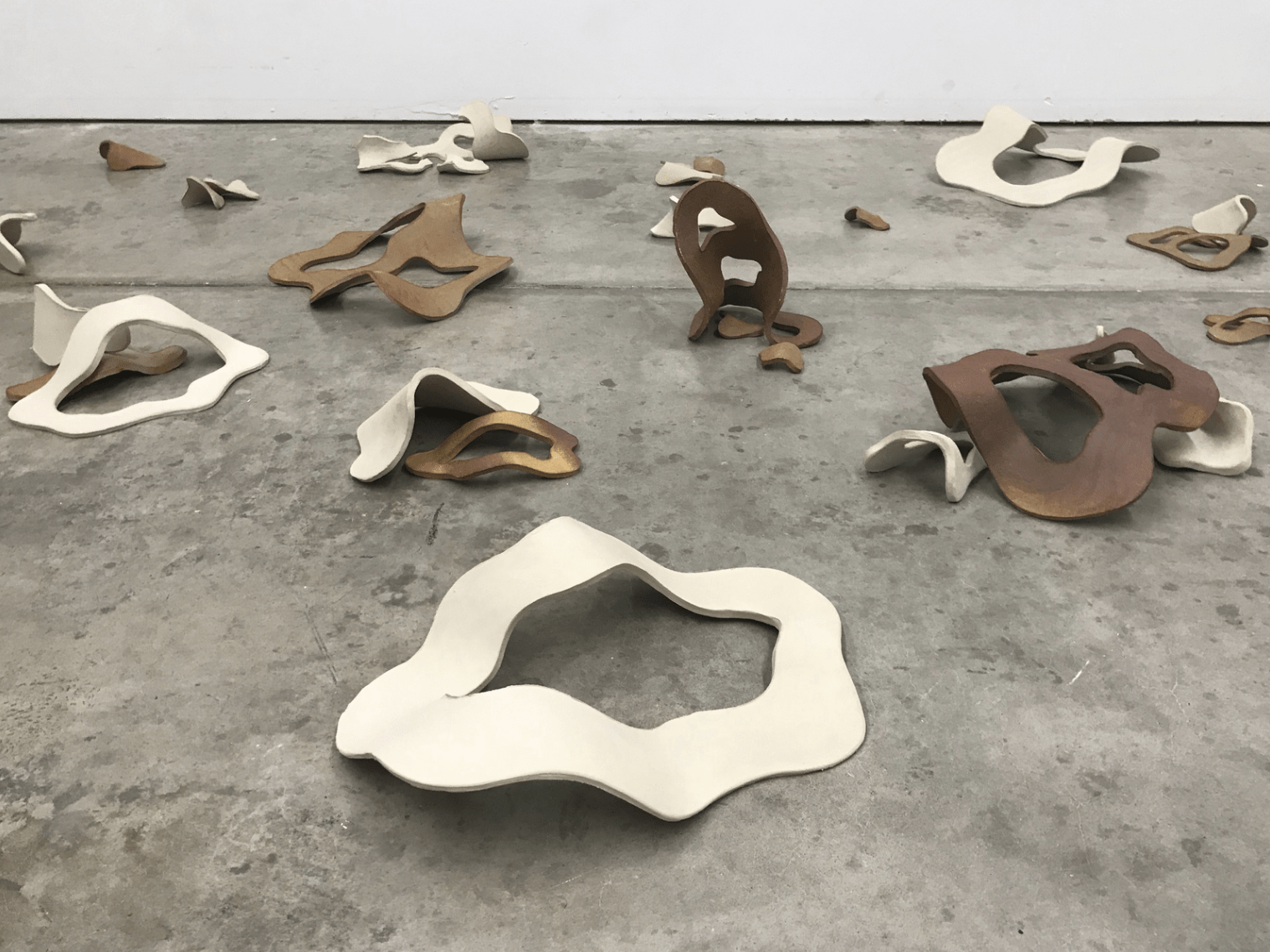
Rae Root
Rae is a PhD candidate in the Department of the History of Art and Architecture at the University of Oregon. Her research focuses on contemporary art and design as it intersects with spatial politics, especially regarding public space, collectivity, and the commons. She relishes in taking poetic license with words, spaces, ingredients, and systems. Her essays have been published in Oregon Humanities and Hyperallergic, and will be featured in Amsterdam University Press’ forthcoming collection Making-Do in Urbanism in the Arts. She has previously been a Programs Assistant for architect Steven Holl’s ‘T’ Space project, a non-profit which produces art and architecture exhibitions in the Hudson Valley.
Joe Sussi
Joe is a Ph.D. candidate in the Department of the History of Art and Architecture at the University of Oregon. His current research focuses on how contemporary artists use bodily ways of knowing and sensing to attune to the ways toxicity shapes experience.

